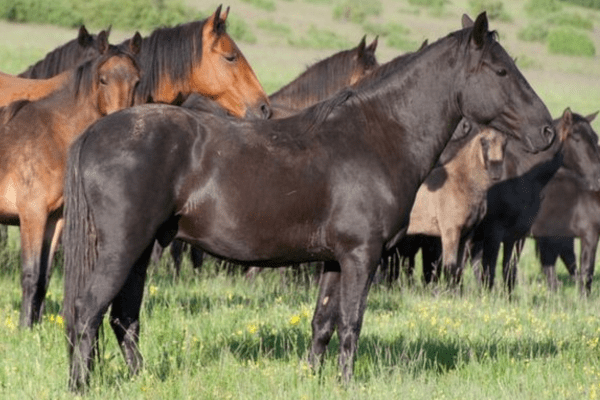The Bosnian Mountain Horse, unique to Bosnia and Herzegovina, stands as the region’s only native horse breed, comprising a significant 70% of its total equine population. Characterized by its smaller stature, this breed serves dual purposes in the region: it is highly valued both as a reliable pack animal and a trusted mount for riding.
This breed embodies the essence of Bosnia and Herzegovina’s equine lineage, reflecting the country’s deep-rooted equestrian traditions and its people’s enduring bond with these versatile and resilient animals.
History:
The Bosnian Mountain Horse, with a rich heritage dating back to centuries of crossbreeding and cultural influence, can be broken down into four key stages:
Crossbreeding Origins: The Bosnian Mountain Horse breed may have originated through crossbreeding between Tarpan and Mongolian Wild Horse horses, two ancient and hardy breeds that set the groundwork for its resilient characteristics. This initial crossbreeding established a solid base from which its robust qualities could flourish.
Influence of Ottoman Empire: Under Ottoman control, the breed underwent significant change. Turks introduced oriental bloodlines, which introduced diversity but initially led to some of its core characteristics being compromised. This period marked a key transformational phase for its history as it intertwined itself with political and cultural shifts across Europe and beyond.
Reintroduction of Tarpan Bloodlines: Recognizing the need to preserve this breed’s distinctive traits, breeders reintroduced Tarpan genetics. This move sought to reinforce their superior strength and endurance for survival in Bosnia and Herzegovina’s rugged terrain.
At the turn of the 20th century, breeding regulations for Bosnian Mountain Horses were carefully orchestrated. Gorazde in Bosnia and Herzegovina served as an essential stud center where state-owned stallions were bred; while mares kept privately in Borike were part of an aggressive breeding program designed to spread only strong traits that had proven themselves through generations.
Stallions underwent rigorous performance tests as part of an effort to uphold breed quality. This ensured that only top sires contributed to future generations, thus enriching physical and temperamental attributes of the breed.
Impact of Bosnian War: The Bosnian war had a dramatic effect on this breed. Horse numbers saw a precipitous decrease, from 46,000 in 1990 to only 7,000 by 2002 – this marked not only a threat to its survival but also an interruption in breeding and conservation efforts.

Physical Characteristics:
Bosnian Mountain Horses are small horses renowned for their hardiness and adaptability. Standing between 13-14 hands high, they boast an exceptional strength-to-weight ratio which allows them to navigate steep, rocky paths easily while their thick coats provide insulation against harsh mountain winters, while their hooves are extraordinarily tough, eliminating the need for shoeing even on rough terrains.
Today Status:
Recently, there has been a surge of interest in protecting and promoting the Bosnian Mountain Horse. Local breeders and international organizations alike are working together to ensure its survival – not only from practical purposes but also cultural value – and these efforts include breeding programs, endurance races, ecotourism integration of these horses into landscape exploration services and ecotourism packages in Bosnia and Herzegovina.
Bosnian Mountain Horses represent resilience and harmony with nature beyond their utilitarian functions. Their story is deeply intertwined with history and culture of their home region, mirroring both its people and unyielding terrain they call home. As life becomes ever more mechanized, their presence serves as a reminder that simple living can still have profoundly sustainable roots connected to the land itself and its cycles.

